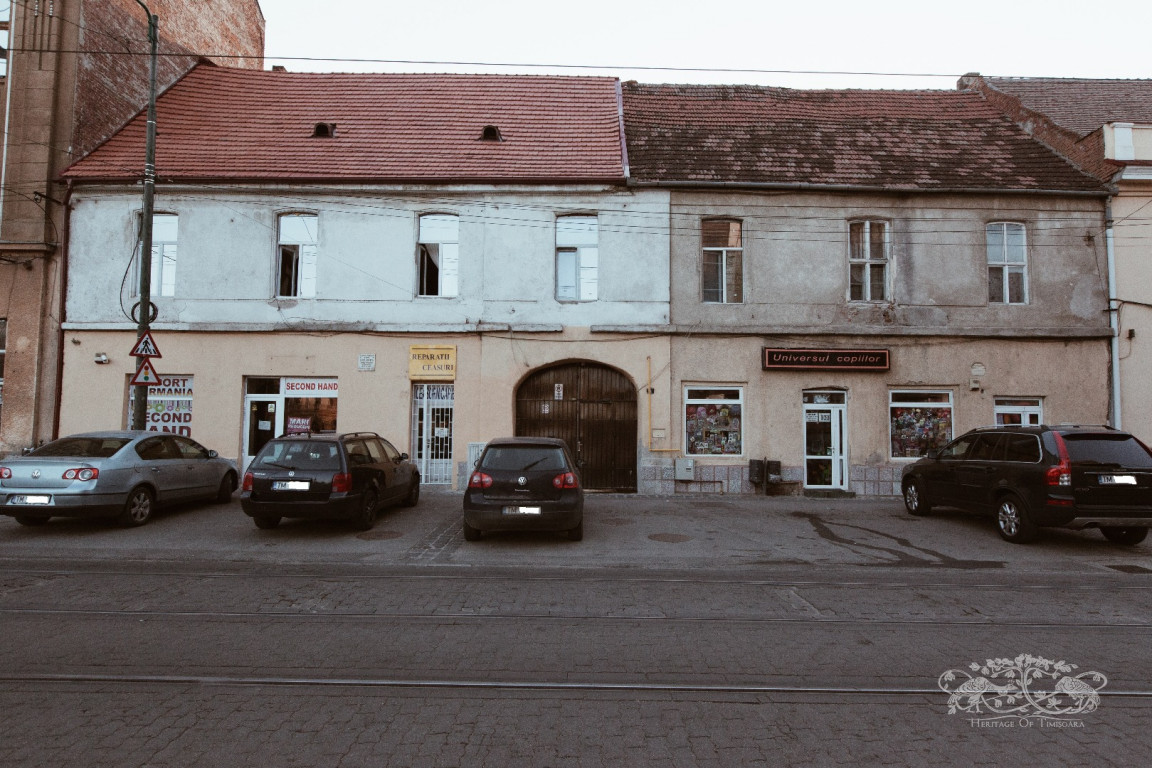This building hosted for many years one of the most important eating houses in Fabric neighbourhood: the Moroccan Inn. In 1851, George Liota appears mentioned as the owner of the inn. At the beginning of the 20th century, the inn belonged to János Pecol. Then, between 1913 and 1914, the inn was owned by Anton Vilsmayer. Other ventures that operated in the building were Jakab Toffler’s textile shop, set up on 4 August 1903, and Stefan and Julia (born Malits) Lazarevits’ shop, set up on 18 September 1876, which sold merchandise from Nurnberg.
In the Interwar period, “The Moroccan” is mentioned as a hotel with a restaurant. The pub owner Ferenczy Béla also carried out his activity within the premises of the building. In 1959, during the communist regime, the building hosted the Supply Base No. 5 of the Ministry of Agriculture and Forestry.
Also worth noting about the Moroccan Inn is that Luță Ioviță, the first Romanian taragot player, regularly performed here towards the end of his life. Luță Ioviță was born in the village of Dalci, in Caraș-Severin county, in a family of ”lăutari” (folk musicians). Since the age of 12, Luță played the flute at village celebrations, gaining increasing local fame. He was discovered by Petru Răbăgia from Caransebeș, a passionate admirer of folk music, who took him under his wing and offered him a clarinet as a gift. Aware of his talent, Răbăgia soon let Luță go in order for him to build a musical career on his own. In the beginning Luță played alone in the inns and markets in Caransebeș, but later he was called to join the orchestras of the most renowned restaurants in town.
Luţă Ioviţă discovered and learned to play the taragot while doing his military service in Szeged and Budapest, in Hungary. The taragot was then a musical instrument recently invented by Vencel József Schunda in collaboration with Gyula Erkel in an attempt to recreate and perfect the old trumpet of the kurutz. Ioviță liked the instrument’s timbre and considered it appropriate for the songs and music in Banat. The instrument brought Ioviţă great popularity. Luță performed in the markets of Caransebeș, Oravița and Reșița, at weddings, village celebrations and parties. Legend has it that during the First World War, on the Italian front, the renowned musician managed to stop the fighting by playing ”La Paloma” on his taragot, as well as some traditional Romanian songs, being applauded and cheered on by both sides.
In 1923, Luță moved with his family to Bucharest, where he started performing at the restaurant ”Regina” (The Queen), then in Amzei Square, was featured on records and enjoyed appearances on radio shows. For a while, he also lived in Cluj-Napoca, where he performed at the restaurant “Brânzaş” and on a show staged by the Cluj-Napoca Opera. He spent the last years of his life in Timişoara, where he played at the restaurant “Dacia” and the hotel and restaurant “The Moroccan”, and collaborated with the “Banat” Music Ensemble and the “Lazăr Cernescu” Orchestra (later renamed “The Doina of Banat”) from Caransebeş. Luţă died in 1954 and is buried in Timişoara, in the cemetery Calea Buziaşului (Buziaș Way).
On the main facade of the building located in Traian Square no. 1 there is a memorial plaque reminding passers-by of the renowned musician from Banat performing in the now vanished ”Moroccan Inn.”

